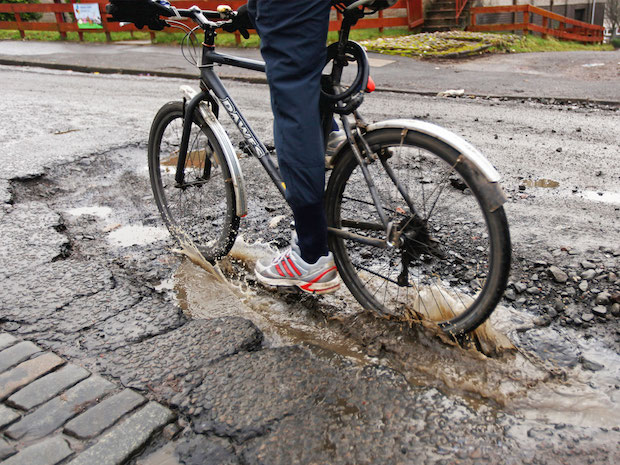Cyclists are at risk of permanent nerve damage because of poor road surfaces, research using a innovative measuring bike has revealed.
The study by Edinburgh Napier University found that riding on particularly bad surfaces for as little as 16 minutes was enough for cyclists to develop Hand-Arm Vibration Syndrome (HAVS).
Symptoms of HAVS include changes in sensory perception such as permanent numbness of the fingers, muscle weakness and bouts of white finger. HAVS is often associated with working with vibrating tools.
Dr Mark Taylor conducted the research using a specially created bike equipped with cameras and sensors, deciding that he had to tackle the problem of poorly-surfaced bike routes after a bump caused by tree roots caused his seven-year-old daughter fall off her bike.
“The minute you get onto a poorly maintained surface you’re getting a substantial duration of vibration exposure that’s being transferred up through your arms and into your shoulders,” Taylor explained to The Scotsman. “Continued exposure to such vibration levels over commuter journeys may lead to discomfort and potentially cause harm.”
Professor Chris Oliver said: “The vibrations transmitted from some surfaces to cyclists’ hands, arms and wrists can cause Havs. This can equate to significant damage to nerves and blood vessels in the arms. It can include numbness in the fingers and cold can trigger painful finger blanching attacks. Havs can be a disability and can prevent people cycling, especially in our cold winters.
“Cyclists should avoid road surfaces that may expose them to Havs. The damage from Havs can’t be reversed but reducing vibration exposure can help reduce the symptoms. “Although some cycle paths and roads are riddled with dangerous potholes, it’s continual vibration over time that’s more significant.”














